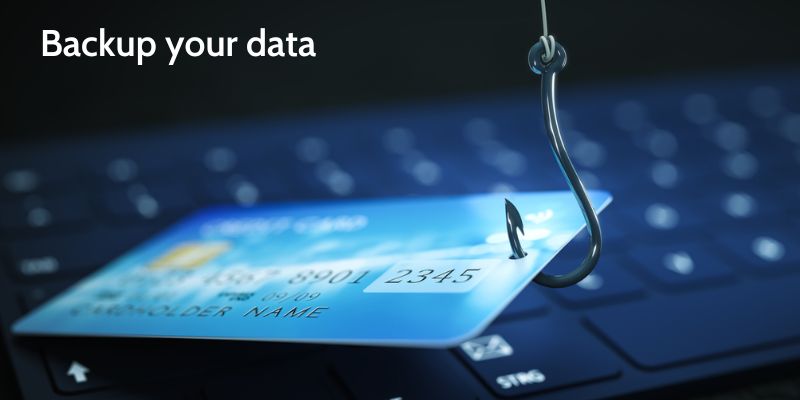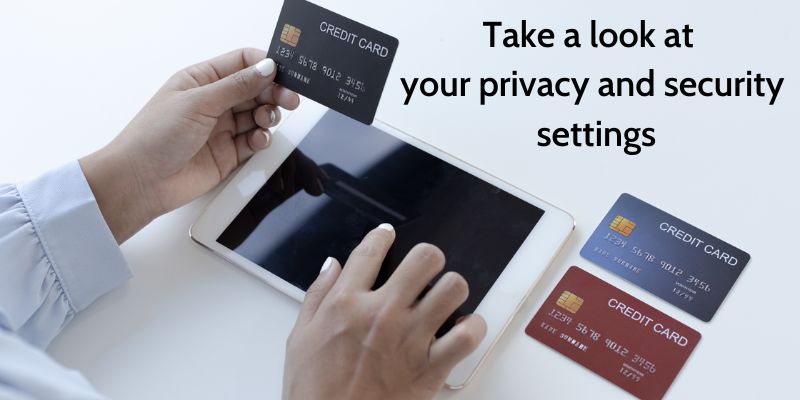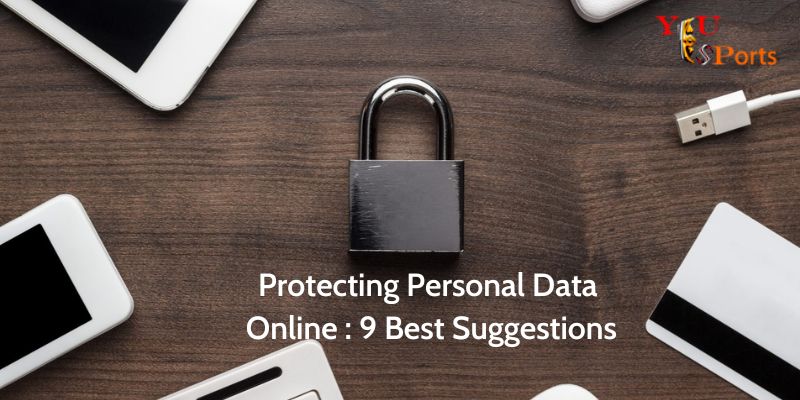For you and your family to fully benefit from online experiences, it’s crucial to lead a successful and secure online existence. Protecting personal data online from viruses, malware, and hackers in the digital era should be a top priority, regardless of whether you enjoy online shopping, learning new things, or staying in touch with pals on social media. See more on yeuesports.com
Protecting Personal Data Online : 9 Best Suggestions
1. Protecting Personal Data Online: Do not open attachments or links

Cybercriminals are skilled at duping victims into clicking on links that appear to be coming from their bank, telecom provider, electric or gas utility, tax service, or other reputable businesses. Consider your options carefully before clicking – misspellings, suspicious email addresses, and communications from pals out of the blue should all be taken very seriously. When logging into your account to double-check any communications before clicking, it is preferable to manually input the URL of the relevant organization. Before clicking, if you’re unsure, phone the company or a friend to double-check.
2. Your digital realm is secured with a password
Avoid using the same password for several accounts by using one-of-a-kind, complicated passwords that combine lowercase and uppercase letters, digits, and symbols. Are you finding it difficult to keep track of them all while safeguarding your accounts? Without having to worry about remembering different passwords for each account, Norton Identity Safe can help you protect your accounts with clever, one-of-a-kind passwords.
3. Protecting Personal Data Online: Safeguard your identity
Never exchange passwords or pick one that is simple to guess. Make careful you swap them out frequently. Whenever possible, confirm an identity or a transaction using two-factor or strong authentication, which combines something you know (username and password) with something you have (a credential like a card, token, or mobile phone).
4. Protecting Personal Data Online: Backup your data

Doing so regularly is the only surefire way to guarantee that you will be able to recover your lost protecting personal data online in the event that your computer is infected with malware, ransomware, or crashes. This implies that you can always retrieve data if you lose it or unintentionally erase it.
5. Protecting Personal Data Online: Check to see
If you are running a reliable and current internet security program. The environment of online threats is rapidly evolving due to increasingly sophisticated threats and cybercriminals’ willingness to leverage any social trend to disseminate malware. When it comes to preventing dangerous software from installing on your PC, security software from a reputable brand like Norton is the best and safest solution because it can stop it from taking control of or sluggishing your system.
Keep all software on your computer up to date with the most recent patches and updates; this will allow for the patching of any potential vulnerabilities, including zero-day flaws, and will help deter hackers and cybercriminals.
Before inputting your financial information on any website, make sure the URL starts with https, where the “s” stands for “secure.” Avoid visiting websites with glaring typos, missing security information, or recognizable symbols. Use a high security web browser that displays the green EV SSL address bar and, if possible, click on the VeriSign checkmark to confirm a site’s legitimacy if in doubt.
6. Protecting Personal Data Online: Once online, always online
Be careful with the personally identifiable information you use in your social media profile and the websites you register with because whatever you publish online is available for anyone to see.
Stop disclosing your private information
First step is simple. Stop sharing it. Simply asking someone for their information is a popular and efficient method of obtaining data, whether it is when making a purchase, signing up for an online organization, or responding to a phishing email. Frequently just give up because courteous or pressed for time.
You have the right to decline, especially if it’s unclear how the requested service or transaction necessitates the information. Likewise, avoid sending or receiving confidential information by email or telephone unless you are the one who called.
7. Protecting Personal Data Online: Verify the permissions on your mobile app
Protecting personal data online is affected by mobile apps as well. To download the app, many demand that you agree to give them access to your contacts, images, GPS location, and other information. The operation of the app is frequently unrelated to the permissions.
It’s a good idea to check each app’s permission settings after downloading it and turn off any features you don’t want. Apply this to both new and existing apps.
8. Protecting Personal Data Online: Take a look at your privacy and security settings

While on the subject of mobile devices, ensure sure your smartphone locks itself when not in use. Anyone who finds your phone after you lose it shouldn’t be able to use it. The preferable option to a simple passcode or swipe pattern is fingerprint authentication, which is available on many modern devices.
Configure “Find my phone” if you can to find your phone if it is lost or stolen. Every social networking site has a security and privacy policy. If you use social media, you should be aware of what information is gathered and shared. If you use Facebook frequently, examine and ensure that you are okay with the privacy settings. It is a robust protecting personal data online collection tool.
9. Protecting Personal Data Online: Use passwords
The Internet of Things (IoT) is here, and computing technology is integrated into household systems, alarms, lighting automation, and other home automations. It’s alarming to hear reports of connected baby monitors, thermostats, and security cameras being compromised.
Improve IoT security by changing the router’s factory default password as soon as possible, making sure it’s a passphrase, regularly updating the firmware, and, if the device has to be directly accessible over the Internet, segmenting it into its own network and limiting access. Identity or protecting personal data online theft protection doesn’t have to be difficult to implement. But in a world that is become more linked and computerized, it is something that all need to confront.
Conclusion
Living a “private” online life is more difficult than ever due to significant data breaches and internet tracking. It’s not impossible, though. You can safeguard your privacy, keep your identity safe, and cut down on the amount of data that businesses gather about you online by taking a few easy measures. It is invaluable knowledge to know how to preserve your privacy online. Here is our comprehensive guide on internet privacy, including what it is, what it means for you, and how to preserve it.
